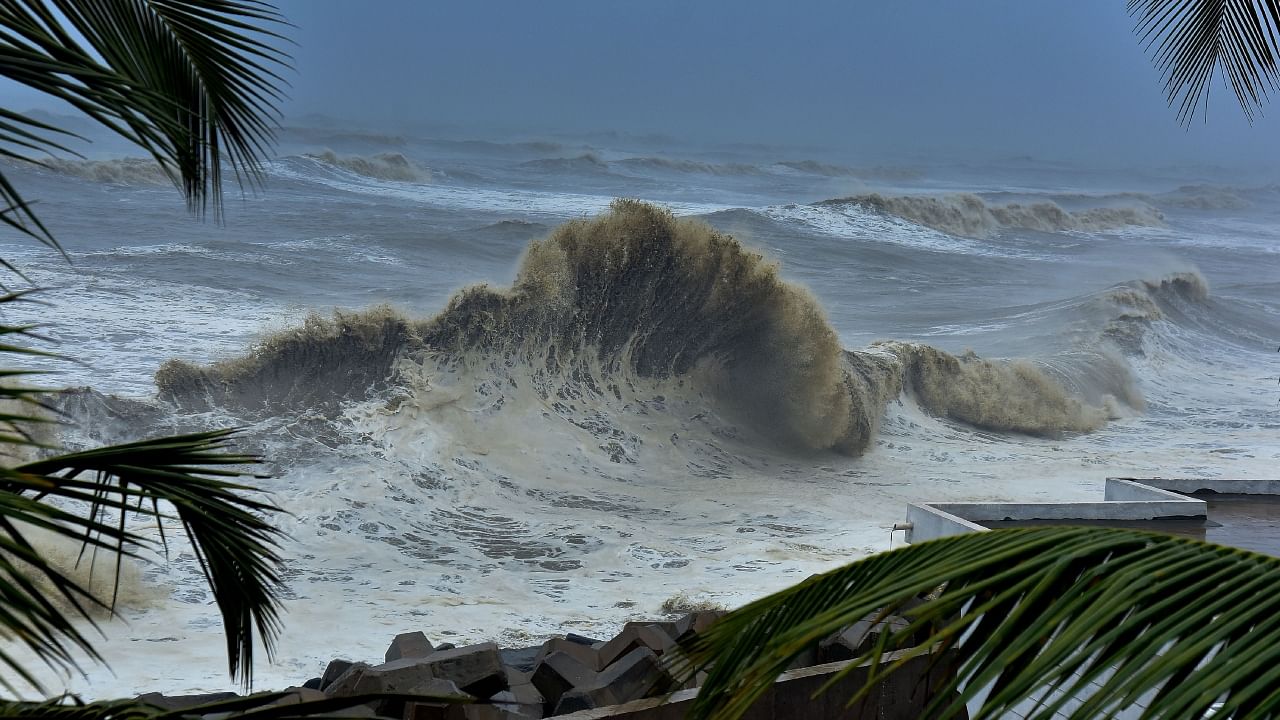
The term 'Kallakkadal' is a combination of two Malayalam words - 'Kallan' and 'Kadal' which means thief and sea. When combined together, the words mean the 'sea arrives as a thief'.
Credit: DH Photo
For the past four days, high sea waves which are also known as swell waves, have flooded numerous houses in the Kerala's coastal areas.
According to a report in the Indian Express, Alappuzha, Kollam and Thiruvananthapuram districts of the south-western coastal state were the worst-hit by the waves until Sunday.
Relief camps have been set up by the authorities to help out the locals who have been affected by the flooding.
This flooding caused by the swell waves is called swell surge or Kallakkadal in Malayalam.
What is Kallakkadal?
Kallakkadal is a geographical phenomenon which causes flooding through high waves in the south-west coast of India, predominantly during the pre-monsoon season which is from April to May.
Used by local fishermen in the coastal areas, the term 'Kallakkadal' is a combination of two Malayalam words - 'Kallan' and 'Kadal'.
'Kallan' means thief and 'Kadal' means sea and when combined together, the words mean the 'sea arrives as a thief'.
According to the IE report. the term Kallakadal was officially approved by the United Nations Educational, Scientific and Cultural Organization (UNESCO).
Kallakkadal is caused by swell waves which emerge due to ocean swell which is mostly caused by storms such as hurricanes or gale winds.
During these fierce winds, a massive energy transfer takes place from the air into water. This then leads to formation of extremely high waves that can roll up to thousands of kilometres.
On March 25, a low atmospheric pressure system from the South Atlantic Ocean, about 10,000 km off the Indian coast moved over the southern region of India, causing the swell waves, which then have been hitting the Kerala coast and the Lakshadweep Island since Sunday. These waves have been reportedly reaching a height of at least 11 metres.
The people living in the coastal areas face a lot of problems as Kallakkadal emerges without any prior warning.
However, the Indian National Centre for Ocean Information Services (INCOIS) in 2020 launched an early warning system called the Swell Surge Forecast System, the IE report said.
INCOIS usually gives a 7-day advanced warning.
How is Kallakkadal different from tsunami?
Kallakkdal is often mistaken with the tsunami which emerges due to seismic activity like earthquakes, underwater landslides or volcanic eruptions. On the other hand, Kallakkadal occurs due to water storms, ocean swells or hurricanes.
What does the forecast say?
Forecasts have said Kerala and the nearby western coastal regions are likely to remain hit by Kallakkadal for the next two days, until it weakens slowly.
INCOIS has said that the high sea waves will move onto the coast of Tamil Nadu and locals have been warned to not venture too deep into vulnerable coastal areas.